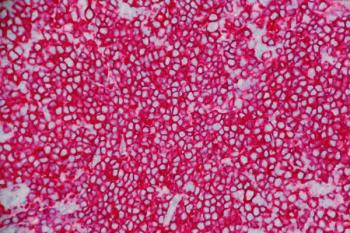
Dapagliflozin Shows Safety, Efficacy in Heart Failure with Improved Ejection Fraction
A prespecified analysis of the DELIVER trial found the SGLT2 inhibitor dapagliflozin to benefit patients in a patient population previously excluded from heart failure outcomes trials.
The sodium-glucose cotransporter 2 (SGLT2) inhibitor dapagliflozin may be beneficial to patients with heart failure with improved ejection fraction (HFimpEF), according to a
The population of patients with HFimpEF is growing as modern treatments for heart failure with reduced ejection fraction (EF) improve; however, previous heart failure outcomes trials have excluded this category of patient. The DELIVER trial—which showed dapagliflozin to reduce the risk of cardiovascular death, HF hospitalization, and urgent care HF visits in patients with HF and a left ventricular EF (LVEF) greater than 40%—purposefully enrolled patients who had a previous LVEF of 40% or lower.
Such improvements in EF are typically due to guideline-directed therapy, and patients with HFimpEF face a better prognosis versus patients whose EF is persistently reduced; however, they still tend to experience cardiovascular events and mortality. In a prespecified analysis of the DELIVER trial, researchers aimed to determine the safety and efficacy of dapagliflozin in patients with HFimpEF.
Of 6263 participants who had symptomatic heart failure and an LVEF above 40%, 1151 (18%) had HFimpEF, which was defined as EF improving from 40% or lower to above 40%. Participants received either 10 mg of dapagliflozin or a placebo daily in the randomized trial, which had a main outcome of composite cardiovascular death or worsening heart failure.
A total of 3131 patients were assigned to dapagliflozin in the study, while 3132 patients received a placebo. Of the participants with HFimpEF, 572 received dapagliflozin and 579 were assigned to the placebo group.
Patients with HFimpEF were generally younger, more likely to be male, less likely to be White, and had a lower baseline LVEF compared with patients whose LVEF was consistently above 40%. Patients with HFimpEF typically carried a diagnosis of HF for longer, and a history of coronary artery disease, myocardial infarction, and hospitalization for HF was more common in those with HFimpEF.
In the treatment and placebo cohorts, 77 and 81 patients discontinued treatment, respectively. Six participants in the dapagliflozin group and 5 in the placebo group had incomplete follow-up information for the main end point.
The rates of worsening HF or cardiovascular death were 8.8 per 100 patient-years in the HFimpEF group and 8.7 per 100 patient-years in the LVEF over 40% group. The results remained consistent after adjusting for age, sex, and geographical region. Participants with HFimpEF and those with LVEF consistently above 40% also had similar rates of cardiovascular death, first HF hospitalizations or urgent HF visits, all-cause death, and total HF events in the study.
Participants with HFimpEF in the dapagliflozin group showed improvement in the primary composite end point similar to patients with LVEF consistently over 40% ([HR, 0.74; 95% CI, 0.56-0.97] and [HR, 0.84; 95% CI, 0.73-0.95], respectively). For patients with HFimpEF, dapagliflozin also reduced the rates of first worsening HF events (HR, 0.78; 95% CI, 0.61-1.14), cardiovascular death (HR, 0.62; 95% CI, 0.41-0.96), and total worsening heart failure events (rate ratio, 0.68; 95% CI, 0.50-0.94) similarly to patients with LVEF consistently over 40%.
The safety profile of dapagliflozin and rates of discontinuation were similar between participants with HFimpEF and participants with LVEF consistently over 40%. Overall, the findings suggest dapagliflozin may be beneficial to patients who have HFimpEF, a growing population that has historically been excluded from clinical trials with heart failure outcomes, according to the investigators.
“Despite previous improvement in LVEF, patients with HFimpEF in DELIVER faced heightened risks of disease progression including worsening HF events and death, which were comparable to those who had LVEF consistently over 40%,” the authors concluded. “These data serve as the largest randomized data of this population and suggest that patients with HFimpEF who are symptomatic may benefit from the addition of dapagliflozin.”
Reference
Vardeny O, Fang JC, Desai AS, et al. Dapagliflozin in heart failure with improved ejection fraction: a prespecified analysis of the DELIVER trial. Nat Med. 2022;28(12):2504-2511. doi:10.1038/s41591-022-02102-9.
Newsletter
Stay informed on drug updates, treatment guidelines, and pharmacy practice trends—subscribe to Pharmacy Times for weekly clinical insights.














































































































































































































